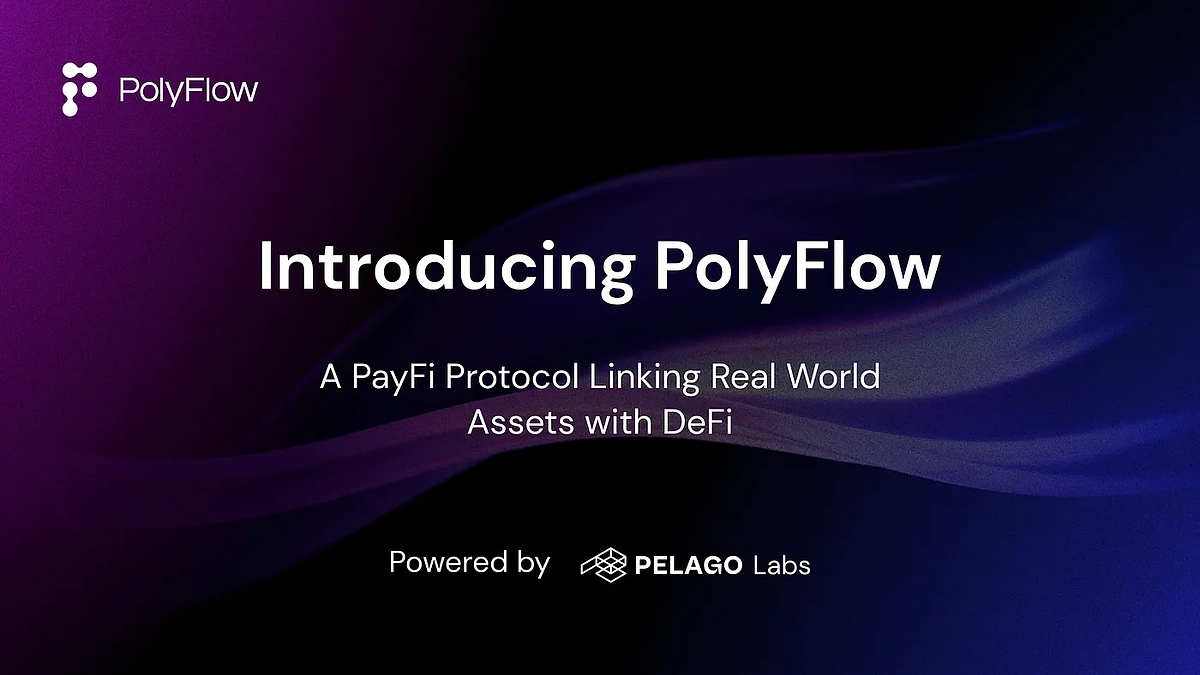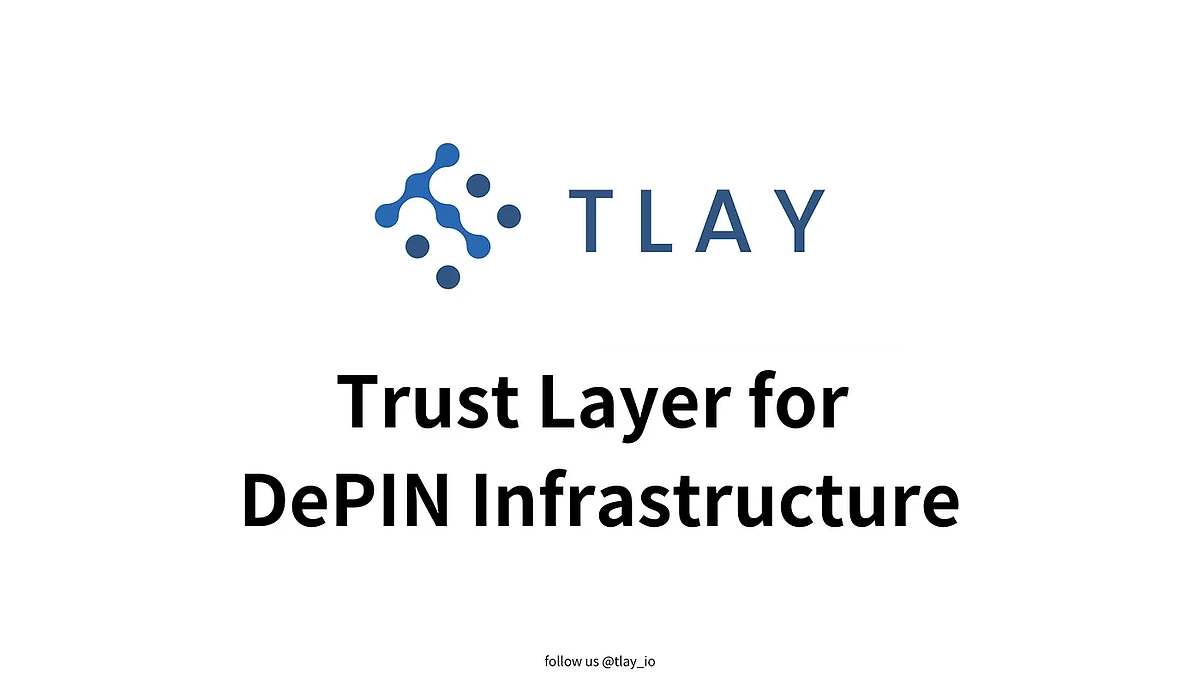What is PayFi? The payment future based on tokenized real-world assets (RWA) and on-chain credit
What is Payment Finance (PayFi)?
PayFi, or Payment Finance, is a broad term that generally refers to the intersection of payment financing and decentralized finance (DeFi). It utilizes blockchain technology to provide faster, more efficient, and potentially lower-cost financial transactions, thereby unlocking the time value of money.
Key Points
- Focus of PayFi: Focuses on real-time settlement and connects decentralized finance (DeFi) with real-world assets (RWA), addressing the limitations of these two ecosystems.
- Unlocking Time Value: PayFi helps users unlock the time value of money (TVM) through decentralized finance, providing instant access to future cash flows for reinvestment.
- Supported by Solana: Solana provides support for PayFi with its high performance (400ms block time), deep liquidity, and a growing developer community.
- Use Cases: PayFi use cases include accounts receivable financing, creator monetization, and "Buy Now Pay Never" models that leverage interest payments.
Satoshi Nakamoto's whitepaper defined Bitcoin as a peer-to-peer (P2P) electronic cash system for online payments without the need for a third party. 15 years later, Bitcoin has not been widely adopted as a digital payment tool for everyday activities.
Instead, stablecoins seem to better fit market demand and have become a preferred choice for settlement, with the stablecoin market growing to over $170 billion (as of October 2024) since 2020.
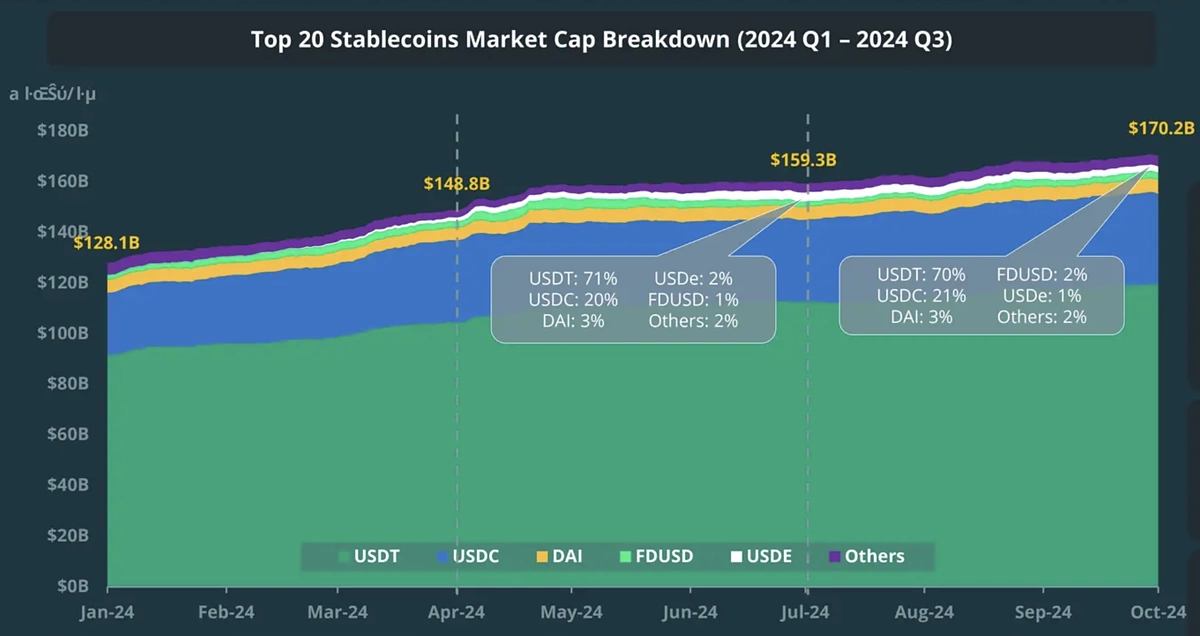
For example, according to an Andreessen Horowitz report, in Q2 2024, the trading volume of stablecoins was more than twice that of Visa.
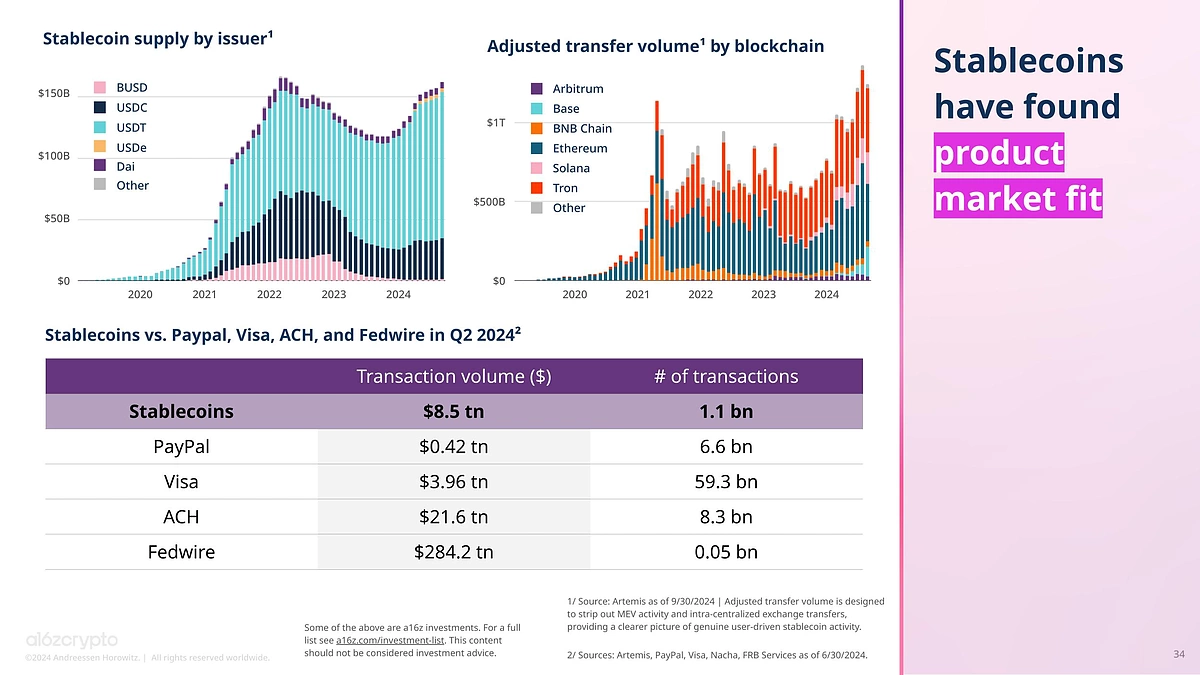
However, while stablecoins have facilitated everyday transactions, they have not fully bridged the gap between the traditional financial and decentralized worlds. More importantly, they have also failed to address the challenge of unlocking the time value of money.
This is where PayFi comes in.
PayFi's solutions innovate in cross-border payment financing and instant settlement of real-world assets (RWAs), making real-world financial transactions more efficient.
Understanding PayFi: When DeFi Meets Payment Financing
According to Lily Liu, the Chair of the Solana Foundation, the term "PayFi" was coined by her, referring to the creation of a new financial market centered on the time value of money. Liu emphasizes that on-chain finance can unlock innovative financial products and experiences that traditional or Web2 finance cannot.

While DeFi provides a rich set of financial services (such as staking, lending, etc.), the primary focus of PayFi is on real-time settlement, helping individuals and businesses more efficiently access and utilize the time value of money.
Messari's "2025 Crypto Theses" also mentions that PayFi, by addressing key issues, connects the two promising ecosystems of real-world assets (RWA) and DeFi. RWA has significant value but lacks liquidity, while DeFi is disconnected from the real economy. These problems are expected to be solved through the effective implementation of PayFi solutions.
Time Value of Money (TVM): A Core Concept Introduced by PayFi from the Finance Industry
The time value of money (TVM) is a fundamental financial concept that emphasizes that a dollar today is worth more than a dollar in the future. This concept is particularly important in today's world, as money invested now has the potential to earn a higher return, while money received in the future will lose purchasing power due to inflation.
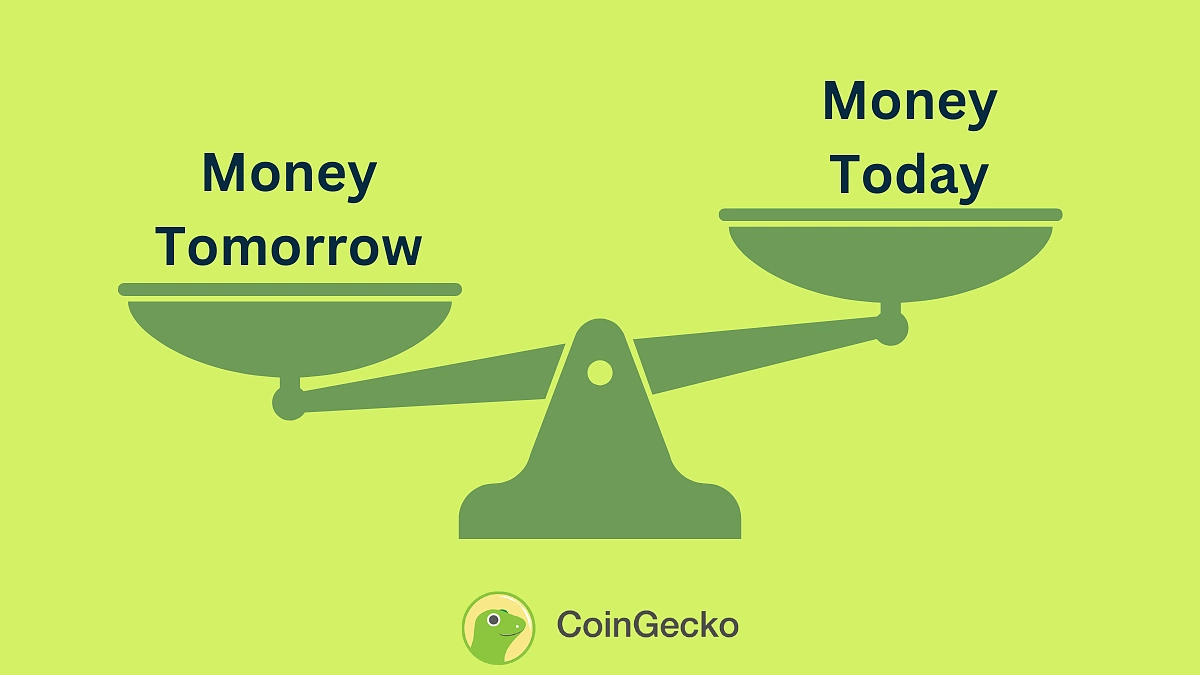
For example, if someone wins a $100,000 prize and has to choose between receiving it in a lump sum or in monthly installments over the next five years, the lump sum is typically more advantageous according to the time value of money principle, as the money can be immediately invested to generate returns, while future installments will lose purchasing power due to inflation.
PayFi utilizes the borderless nature of blockchain to help users realize the time value of money through decentralized money markets. In addition to reducing transaction costs, users can also benefit from faster transaction speeds, allowing them to more effectively reinvest their funds or assets.
Solana and PayFi: Transforming the Global Financial Market
According to Lily Liu, the Chair of the Solana Foundation, for PayFi-based applications to thrive on the blockchain network, three key requirements must be met:
- High Performance
- Ample Capital Liquidity
- Rich Talent Liquidity
1. High Performance
Instant settlement and T+0 cross-border transactions are one of the biggest selling points of PayFi. To achieve this performance, a fast and reliable blockchain infrastructure is crucial.
Through its Proof of History (PoH) mechanism, Solana achieves a 400ms block time and can theoretically process over 65,000 transactions per second (TPS), providing strong performance support for PayFi.

In addition to high performance, Solana's transaction fees of less than $0.01 make the blockchain more attractive to users and projects, encouraging more experimentation with PayFi applications.
2. Capital Liquidity
The availability of highly liquid capital is crucial for the smooth operation of PayFi, including supporting real-time transactions, and the Solana ecosystem has performed well in this regard. Solana's total value locked (TVL) exceeds $6 billion, ensuring sufficient liquidity for PayFi transactions.
In addition, the largest stablecoin on Solana, USD Coin (USDC), has a market capitalization of nearly $2.5 billion, making it a key pillar in maintaining liquidity. USDC supports PayFi networks like Huma to provide cross-border lending and remittance services on-demand.
3. Talent Mobility
A strong developer community is crucial for building more PayFi solutions for crypto users. The number of active developers in the Solana crypto ecosystem has been growing continuously. Notably, Solana's total monthly active developers increased from 244 in April 2020 to over 3,300 in April 2024.
Overall, Solana is a suitable blockchain for real-world PayFi use cases, with optimal performance, low transaction fees, ample capital liquidity, and an active developer community.
Potential Applications of PayFi
According to Mordor Intelligence, the global payment financing market is expected to reach $2.85 trillion by 2024 and grow to $4.78 trillion by 2029. The Asia-Pacific region is projected to be the fastest-growing region during this period and hold the largest market share.
This massive growth highlights the urgent need for efficient, scalable, and accessible financial infrastructure, which is precisely what PayFi aims to provide.
Here are some potential PayFi applications that could reshape the financial future:
Buy Now, Pay Never
Buy Now, Pay Never allows users to leverage the time value of money to purchase products or services without the need for future payment. In this case, the user will deposit sufficient funds into a PayFi-supported product and use the generated interest as the payment method.
Imagine you want to buy a new smartphone worth $1,000. Instead of paying upfront or applying for a traditional loan, you can use a PayFi platform to allocate a portion of your future income towards this purchase. Suppose you agree to pay $100 per month from your salary.
This is where yield-bearing stablecoins come into play. These stablecoins generate interest during the holding period. The PayFi platform can use the committed $100 per month to purchase these stablecoins. The stablecoins are then locked in a smart contract, automatically generating earnings. Over time, the accumulated interest and principal from the yield-bearing stablecoins will eventually cover the cost of the smartphone.
When the total amount reaches $1,000, the smart contract will automatically pay the remaining balance to the seller, and you can officially own the smartphone without a one-time full payment.
Accounts Receivable Financing
Accounts receivable financing is a challenge for most businesses without surplus capital or financial institution support. This predicament can even lead to operational failures due to a lack of funds. According to a report by Atradius, 55% of businesses in the US experience delayed invoice payments, and 9% face bad debt issues.
To address this issue, PayFi introduces a decentralized and automated accounts receivable financing solution. Traditional invoice financing often relies on intermediaries like banks or financial institutions, leading to delays, additional fees, and restrictive credit assessments. In contrast, PayFi enables businesses to tokenize their invoices or accounts receivable and use them as collateral on a blockchain platform to obtain immediate liquidity.
Faster access to funds helps businesses maintain a safety cushion, allowing them to address unexpected expenses or expand growth opportunities without payment delay constraints.
Creator Monetization
The creator economy is rapidly growing, and it is expected to exceed $500 billion globally by 2030. However, even on popular platforms, creators often have to wait weeks to receive revenue from their latest videos.
In this case, PayFi can help content creators by providing upfront funding for video production, allowing them to be automatically repaid based on the revenue generated from the video's viewership.
This PayFi service enables creators, especially micro-influencers, to consistently publish videos without having to wait for the next payout.
Notable Participants in the PayFi Space
As remittance and settlement times lengthen, slowing down business transactions, many teams are working together to address these challenges.
Here, we will introduce three prominent projects in the PayFi ecosystem:
- Huma Finance
- PolyFlow
- TLay
1. Huma Finance
Huma Finance is an innovative platform focused on integrating decentralized finance (DeFi) with real-world financial applications, particularly in income-backed lending and payment financing solutions.
The project positions itself as a pioneer in the PayFi space, leveraging blockchain capabilities to provide real-time, borderless liquidity for businesses and individuals.
Huma Finance offers an on-chain factoring marketplace, allowing businesses to borrow against future revenue or invoices. This solution helps cash-strapped companies by converting accounts receivable into digital assets on the blockchain, providing immediate liquidity.
The platform's integrations with networks like Circle, Superfluid, and Request Network demonstrate its commitment to making decentralized invoice financing more accessible and efficient, serving various stakeholders.
Huma recently raised $38 million in funding and is collaborating with Arf to expand its liquidity supply, extending its PayFi network to blockchains like Stellar and Solana. Its approach enables faster settlements and makes financial services more accessible by shifting from asset-based to cash flow-based underwriting.
Key Highlights
- PayFi: Huma is a pioneer in the PayFi field, aiming to bring traditional payment and financing processes onto the , including invoice financing, supply chain financing, and more.
- Global Lending: They facilitate cross-border lending, enabling businesses and individuals to access funds more easily regardless of their location.
- Real-World Assets (RWAs): Huma is working to connect real-world assets to the , unlocking new financing opportunities and liquidity for previously illiquid assets.
2. PolyFlow
PolyFlow is a -based infrastructure aiming to improve the PayFi ecosystem by integrating decentralized finance (DeFi) with real-world payments and assets. Its primary goal is to address the limitations of traditional and -based payments by enhancing compliance, scalability, and transparency.
PolyFlow introduces two key elements:
1. Payment ID (PID): This decentralized identity system securely manages transaction flows, protecting user privacy through zero-knowledge proofs while ensuring compliance. The PID acts as a digital wallet, containing payment methods, digital identities, or Non-Fungible Tokens (NFTs), enhancing cross-functional usability.
2. Payment Liquidity Pool (PLP): This component facilitates the secure and efficient flow of funds without relying on centralized institutions. Through smart contracts, the PLP automates fund flows, reducing settlement risks and improving capital utilization efficiency between traditional finance (TradFi) and decentralized finance (DeFi) systems.
PolyFlow is working to create a unified financial infrastructure by decoupling the information and fund flows traditionally managed by centralized systems. This modular framework ensures compliance and reduces custodial risks.
The project has already partnered with OKX Wallet and is exploring innovative use cases, such as "Scan to Earn".
Key Highlights
- PayFi Infrastructure: PolyFlow is developing infrastructure for the PayFi ecosystem, focusing on bridging the gap between traditional payment systems and decentralized finance (DeFi).
- Compliance: Ensuring compliance is a key aspect of their approach. PolyFlow aims to build a regulatory-compliant system while fully leveraging the advantages of .
- Security and Efficiency: PolyFlow prioritizes security and efficiency in its design, supporting net settlement and micropayments on networks, embodying the original vision of .
3. TLay
TLay (the Trust Layer of DePIN) is a decentralized infrastructure layer designed for the Decentralized Physical Infrastructure Network (DePIN). Its goal is to facilitate large-scale collaboration between machines and devices by providing modular tools, and to enable the management of real-world assets (RWAs) through -based solutions, bridging the physical and digital worlds.
TLay integrates various technologies, including trusted chipsets, Internet of Things (IoT) oracle services, and DePIN-specific application chains. This structure simplifies the development process by providing ready-to-use frameworks and tools for projects in the DePIN ecosystem, helping to quickly launch new applications. Developers can use these components to rapidly deploy innovative distributed digital finance and business solutions.
One of TLay's primary objectives is to ensure the authenticity, privacy, and transparency of data. For example, its BoAT3 IoT oracle service directly authenticates physical device data onto the , preventing data tampering while supporting privacy protection. This setup is crucial for building trust within the DePIN ecosystem, as accurate real-time data streams are essential.
TLay also collaborates with partners like Huma Finance to play a role in PayFi (Payment Finance) innovations, ensuring trust and data security. This collaboration enables the PayFi system to leverage trusted on-chain data to provide credit and real-time lending solutions, driving the development of the machine economy, where automated payments and financing are key growth drivers.
Key Highlights
- DePIN Infrastructure: TLay focuses on the Decentralized Physical Infrastructure Network, including wireless networks, renewable energy grids, and sensor networks.
- Digital Twin Technology: They create digital representations (or "digital twins") of physical assets on the . This enables secure, transparent tracking, management, and monetization of these assets.
- Data Integrity: TLay uses cryptographic proofs and decentralized consensus mechanisms to ensure the integrity of data from physical assets. This is crucial for establishing trust and reliability within the DePIN network.
Conclusion
PayFi is transforming the way payments are made in the financial sector, including traditional decentralized finance. With the proper implementation of PayFi solutions, users can access future capital "now" and finance other interests.
We are still in the early stages of the PayFi revolution, but its potential is immense. By connecting real-world assets (RWAs), automating payments, and integrating DeFi and TradFi, PayFi is reshaping the financial landscape.
Furthermore, through events like the 2024 PayFi Summit hosted by Solana, the impact of PayFi is rapidly spreading, and the community is accelerating. Given its technological characteristics, PayFi applications will soon extend beyond the virtual world and impact the real-world economy.


